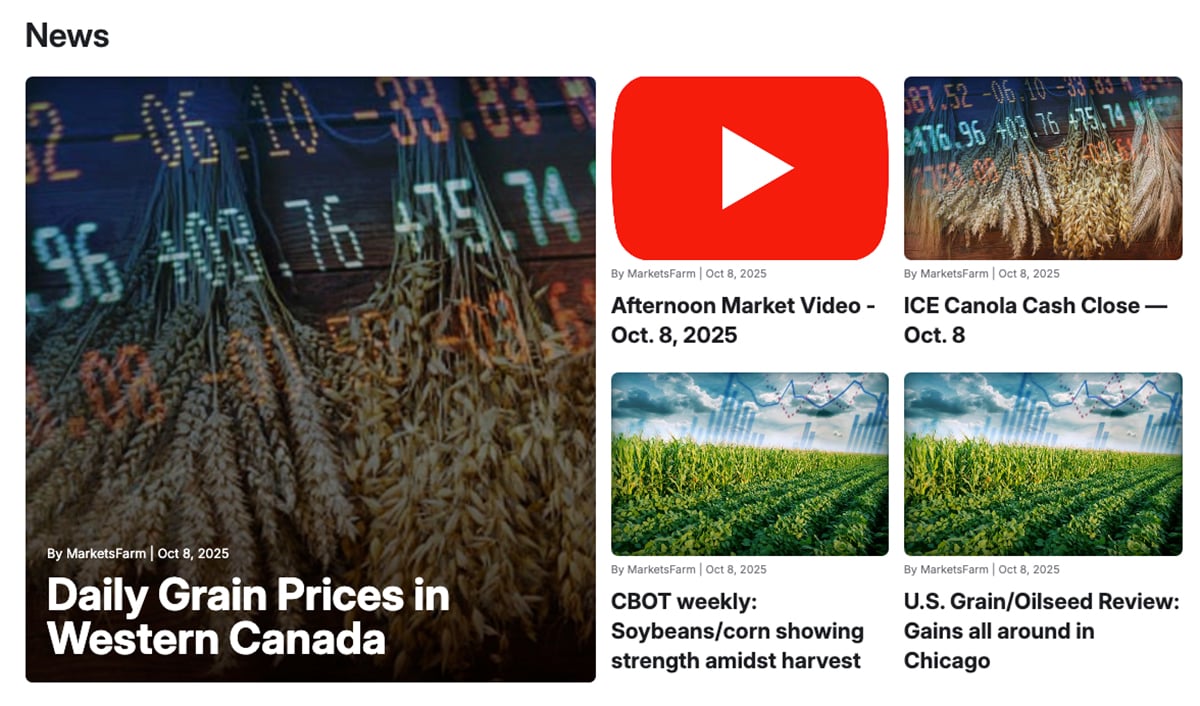When local crops including their own began looking like a disaster, the Starlite Colony hedged its hog feeding operation.
“We started buying grain three-four months ago,” said James Hofer, who is in charge of the Winnipeg-area Hutterite colony’s hog production.
“The trucks were rolling in all summer.”
Hog producers in the Red River Valley face a lot of feed grain problems this year, including the possibility that a trade review of American corn imports might result in a duty.
The valley’s own corn crop was almost wiped out and barley and feed wheat crops were also poor.
Read Also

VIDEO: Catch up with the Western Producer Markets Desk
The Western Producer Markets Desk provides daily updates on agricultural markets, with recent video commentary including looks into canola, wheat, cattle and feed grains.
Fusarium head blight is always a problem, so farmers are also suspicious about the small amounts of feed grain that are making it to the bin.
Producers in the hog-intensive area have grown accustomed to importing feed in most years because of the vomitoxin problem and the area’s chronic feed deficit, but this year they face the added threat of a possible duty on American corn imports.
Usually Red River Valley producers buy corn from Minnesota and barley from southwestern Manitoba and Saskatchewan, but import duties would interfere with corn imports.
Tyler Fulton, a risk management specialist with Manitoba Pork Marketing Co-op, said farmers need to be careful with the duty situation.
If the government’s trade investigation leads to a duty on corn, there is a small chance that it could include a retroactive component dealing with corn imported since the investigation was launched.
“If you can, try to source your feed grains from domestic suppliers to avoid any possibility that you could be dinged with a tariff you don’t want to be dinged with,” said Fulton.
There is a greater chance of problems if a producer sets up a fixed price contract with an American supplier for future deliveries.
“The tariff would be slapped on top of that price,” said Fulton.
Producers who are still short of feed for the winter should try to lock in supplies now. Setting up a fixed price contract with growers in feed grain-rich areas is a good idea, he said.
But producers should ensure that they are able to make an agreement that will stick.
“There is some periodic reneging on contracts that are made with just a handshake,” said Fulton.
“It’s important, if you’re talking about 40,000, 50,000, 100,000 bushels, to have something down on paper.”
The best strategy for minimizing risk is to have feed grains in the bin. For Hofer’s colony, which has already brought in most of its winter feed needs, a duty on corn probably wouldn’t mean anything.
But for farmers who have yet to bring in supplies, it may be difficult. Grain haulers are hard to find at harvest time in good years, and this year, high fuel prices have discouraged many truckers from running their machines.
“It’s just compounded the problem,” said Fulton.
“Some guys just seem less willing to do more runs. They’re just doing the bare minimum.
“A 50 percent increase in fuel prices really threw a wrench into things.”
Hofer said his colony decided to play it safe after its own feed grains began to look bad. It wasn’t able to plant winter wheat in late 2004 because the soil was too wet and the summer barley crop was looking bad.
Spring and early summer feed grain prices around Dauphin, Man., looked attractive, so the Starlite colony started buying.
“We figured that if there’s good quality grain elsewhere, we’ll take it,” said Hofer.
“Even if we got a good crop here, there’s no assurance it’ll be clean (of vomitoxin) and we can use it.”
Fulton said futures and options contracts aren’t a good hedge against trade wars, so farmers need to focus on getting the actual grain to cut their risk.
“The best thing to do is to get your hands on the product now and pay the cost of hanging on to it,” said Fulton.
“It’s really difficult to come up with another method to come up with the same result.”

















